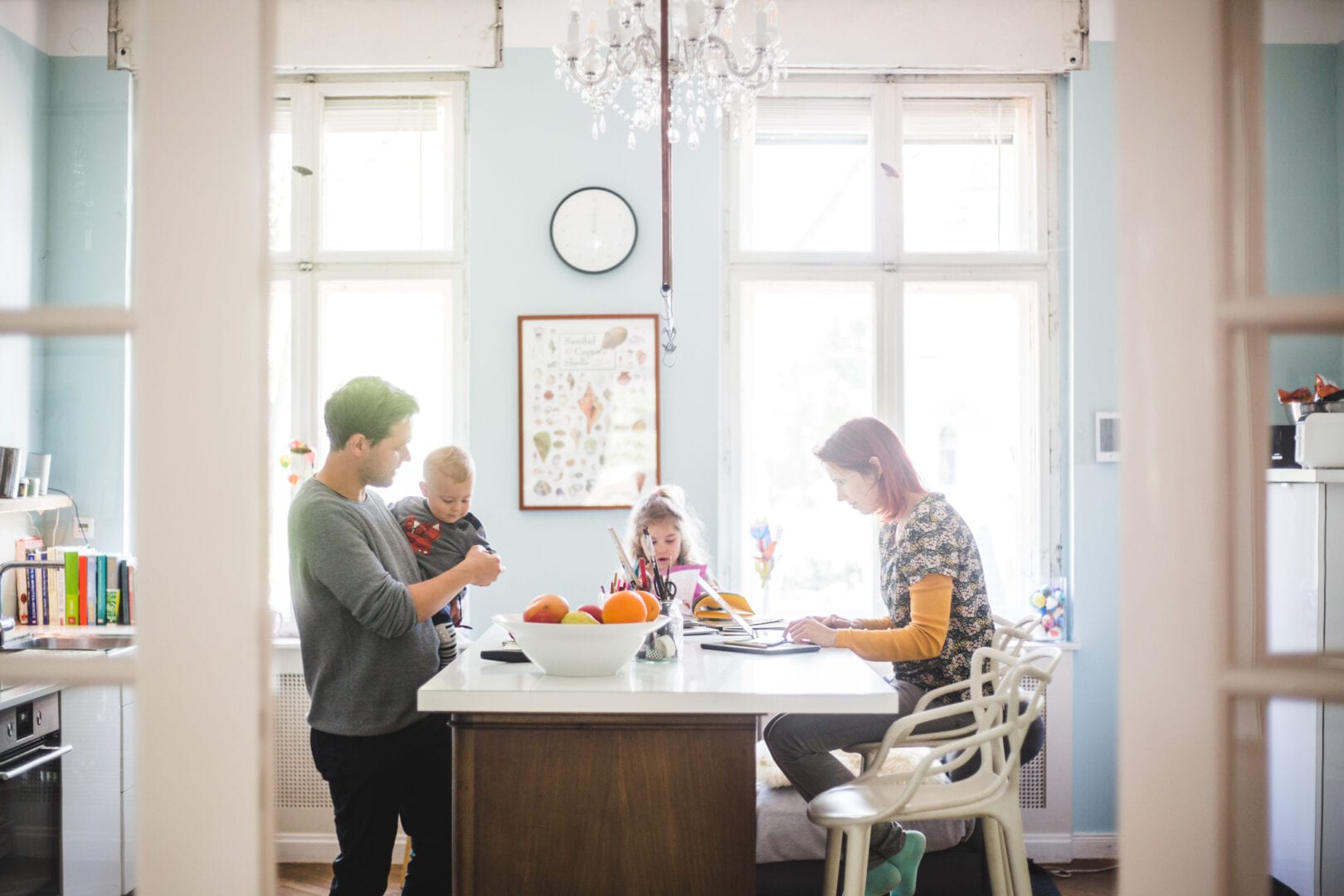When the movie “Mr. Mom” was released, it was a box office smash. Michael Keaton starred as a recently laid-off auto engineer turned stay-at-home-dad caring for his three young kids, while his wife, played by Teri Garr, transitioned from stay-at-home-mom to high-powered ad exec and sole breadwinner. The struggles and antics that played out from a reversal of gender role “norms” was comedy gold.
That was 1983, and we’ve made a lot of progress since then. In many ways, things are more equal. But in some ways, like on the home front, they’re not nearly equal enough. Conversations about gender equality usually focus on the workplace or government, but in overlooking what’s happening at home, we’re missing the opportunity for change on a far more universal level.
“Conversations about gender equality usually focus on the workplace or government, but in overlooking what’s happening at home, we’re missing the opportunity for change on a far more universal level.”
Overwhelmingly, women are still doing most of the housework and child care. That alone is a big problem. But a bigger one is that many of our male partners don’t see it that way. According to a study conducted by Pew Research of married or cohabitating opposite-sex couples,
- 46% of men say household chores are shared equally vs. 34% of women.
- 63% of dads say “being an involved parent” is shared equally with their female partner vs. just 43% of moms.
- 35% of dads say “managing their children’s schedules and activities” is shared equally between partners, but that number drops to 23% when you ask moms.
The perception gap is real.
The theme of this year’s International Women’s Day is #BreakTheBias. It challenges us to “imagine a gender equal world.” And it’s clear to me that that world starts at home. We all need to take an honest look inside our households and examine the ways in which housework, chores and caregiving – in all their forms, from caring for children and aging parents, to doing the dishes and the grocery shopping – is biased toward women.
“The theme of this year’s International Women’s Day is #BreakTheBias. It challenges us to ‘imagine a gender equal world.’ And it’s clear to me that that world starts at home.”
The pandemic forced us to open our eyes to all the unpaid work and mental load that women take on to run a home and raise a family, on top of their careers outside of the home. Amid school and day care closures and the shift to remote work, dads across America stepped it up and became more competent version of “Mr. Mom.” American dads are sharing child care and housework responsibilities on more equal footing with their female partners — cooking, cleaning, stocking the fridge, buying grandpa’s birthday gift (and sometimes even wrapping it).
Inherently, none of this housework has an assigned gender. We have given it one, and we continue to do so. Nearly 40 years since “Mr. Mom,” and all too often the “norm” remains … that dad is the coach and mom does the kids’ hair. Why can’t dad do the hair? (He can.) Why can’t mom coach the boys’ basketball team? (She does.)
At the same time, the pandemic also shattered any notion that household work and caregiving is at all gender equal. Even with their male partners doing more, women still have taken on the bulk of child care and housework, on top of trying to maintain their careers. That’s left millions of working women feeling completely burned out. It’s why one in three women considered taking a step back in their careers or leaving the workforce entirely last year, according to the 2021 Women in the Workplace report by McKinsey & Company and LeanIn.org. Alarmingly, since the start of the pandemic, women have lost more than 5.3 million net jobs, and women’s participation in the labor force has plunged to a 33-year low. We are all witness to the economic fallout of gender inequality.
“Even with their male partners doing more, women still have taken on the bulk of child care and housework, on top of trying to maintain their careers. That’s left millions of working women feeling completely burned out.”
There’s something else we need to talk about. Women have to acknowledge our own unconscious biases, too. Let’s be honest. How often has your male partner gone to do the laundry or clean the kitchen and you’ve stepped in to do it yourself because “he does it wrong” or “it’s easier if I just do it”? I am so guilty of this. (And I am sure my husband will love that I’m putting this in print.)
But here’s the problem. All those “I’ll just do it”s add up to a lot. They wear us out, and, perhaps most importantly, they continue to entrench the outdated gender roles we’re working so hard to change. We need to do a better job at relinquishing control. If you want him to step it up, then sometimes you’ve got to step down.
Every family is different, and the choices we make will be as well. The key, I believe, is strong communication, calling out biases and prioritizing what’s most important to you within your family situation. Then, working together to create a structure that’s fair and equitable for both partners. Doing this ultimately makes couples stronger and more resilient for the times when — not if — household dynamics change. There’s a great scene in “Mr. Mom” where Michael Keaton tells his wife he’s losing it and his brain is like oatmeal after spending a day with the kids. His wife empathizes and says she “has been there” too. Michael’s next line is a great one: ‘Well, if you’re so unhappy, why don’t you say something?’ Simple concept, but so damn true.
“The key, I believe, is strong communication, calling out biases, and prioritizing what’s most important to you within your family situation. Then, working together to create a structure that’s fair and equitable for both partners.“
My husband and I are living this right now. Pre-pandemic, we’d established an equitable division of labor at home – taking care of our three young kids, caring for my aging dad and doing household chores — so that both of us could also thrive in our careers. Our system worked for us … until it didn’t. My husband is an essential worker so when the pandemic hit, his hours at work changed dramatically and we needed to adapt. And we mostly have. Some days are harder than others, but we continue to find new ways to make things work at home — we downsized our living situation, we employ more help (we’re fortunate to be able to do so) and we’re constantly adjusting our working hours. It’s not easy (no one has had it “easy” throughout this crisis), but the mutual respect and support we show one another for our roles as parents and in our careers has made us a stronger couple and, I think, good role models for our children. We’re trying to live the values we want to see in the world.
So, this year, as we celebrate International Women’s Day, I encourage you to think about all the ways in which you can start to #BreaktheBias inside your own home as a foundational step to creating the gender-equal world we want — across all aspects of our lives.





